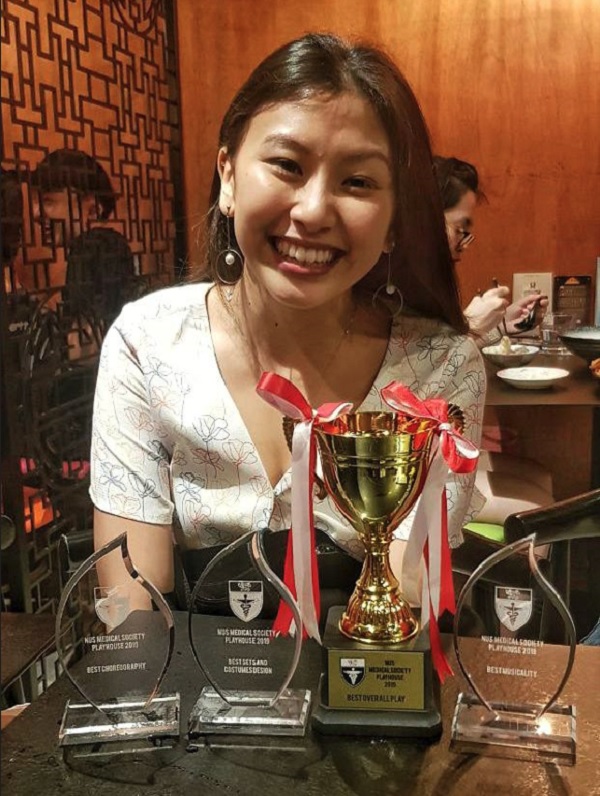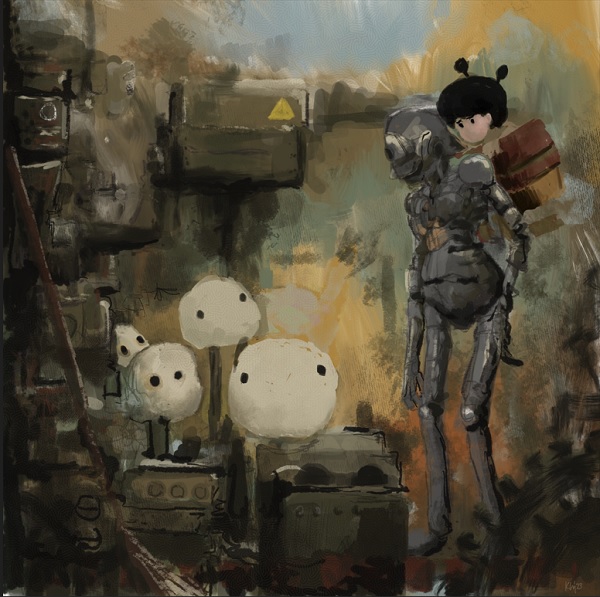In the medical profession, "the art of medicine" is a term often used to remind physicians that medicine is rooted in both art and science. This issue's Feature, we invite three doctors who have gone beyond the duality of art and science, to embrace and practise the arts alongside medicine. They share below their journeys in the arts scene and how these experiences enrich ther medical practice.
Yew Tong Wei
I started learning Chinese calligraphy from my father at the age of seven, and naturally delved into Chinese ink painting and seal carving later. Since then, I have not stopped practising the arts, even as I studied and practise medicine.
Chinese art fascinates me with its depth. It is revealing of the artist's character and inner qualities, and it connects with the profound philosophy of how we interact with the world and the people around us. A great piece of traditional Chinese art is often silently powerful, spatially soothing and able to evoke long-lasting, reflective emotions. The ability to create artworks with such qualities lies upon the mastery of brush techniques first and foremost, but beyond that, the effective "use of self" by the artist, and the display of empathy, connection, and understanding of humanity and our environment.
This is no different from the practice of medicine. In our formative years, much energy is channelled towards learning the science of medicine. There is just so much to read and remember, and then we learn to apply the knowledge to clinical circumstances. As we become more well versed with all the professional knowledge and skills and grow to become more experienced clinicians, we realise that many a time, the most impactful moments occur when we combine these skills and knowledge with our own personality traits, belief systems, life experiences and cultural heritage – the "use of self" as a doctor, and being an authentic "person" for our patients.
I consider myself very fortunate to be able to wander into the two best worlds – medicine and art – with experiences in each field nourishing the other. As an endocrinologist, I work with people living with long-term conditions such as diabetes, and their stories serve as valuable inspirations for me in creating my artworks that form meaningful connections beyond words with viewers. On the other hand, the sensitivity and observances that I learn from the practice of art enhances the way that I interact, communicate and empathise with my patients.
Living in Singapore where East meets West also provides me with unique paradigms and opportunities that allow me to innovate and rejuvenate these traditional Chinese art forms, by infusing my artworks with refreshing modern touches while maintaining elegance and classical eminence. These pursuits outside of medicine and attempts to marry legacy and modernity when creating my artworks are fun, invigorating and helpful for my well-being.

Chinese calligraphy written in a more modern arrangement. It reads: “I dance freely to the tune of the breeze under the bright moon, O what night is this night?” (30 x 30 cm, 2019)
Katelyn Chiu
It all started with one-woman shows in my bedroom.
I was at the tender age of 9 and took on all the roles needed to put on a theatre production: script writing, acting, directing, prop-making, costume designing, and even marketing. I sold tickets to my family to come and watch me star in a play, presented by yours truly. Recognising my interests, my parents then encouraged me to audition for the School of the Arts, Singapore's (SOTA) theatre studies, and I got accepted! I studied theatre in SOTA for four years and learnt all aspects of theatre production while honing my craftsmanship as a thespian.
Fast forward to 2024, I am currently a Postgraduate Year 3 doctor, midway through my first year of internal medicine residency. I recall being asked during my medical school interview how studying the arts might bode well for me in a career as a doctor. I believe that studying theatre has shaped me to be a more empathetic individual and challenged me to strengthen my communication skills. As theatre performers, we learn how to immerse ourselves in make-believe worlds and bring characters to life. These characters often have different values, perspectives, motivations and ambitions from our own. We spend an immense amount of time on character building beyond what the script offers, in order to meaningfully embody these characters. We read between the lines, and we listen.
Although I am still in the infancy of my medical career, I believe that the key to being an excellent physician is to be a great listener. To listen, not simply to our patients' physical ailments, but to all that is unspoken and perhaps unseen – including their body language and tone of voice – and being astute with regard to their family dynamics. Theatre has cultivated in me a keen sensitivity towards people of all backgrounds. It has taught me to see my patients beyond their list of medical issues, as people with families, communities and much more. It is such a privilege to be privy to our patient's lives.
I do hope that more healthcare workers will consider dabbling in the arts – whether as a performer or a patron. Art can help us to keep our hearts tender.

Katelyn grinning widely in front of the awards clinched by NUS Medicine Year 4 Playhouse production "My Grandmothers Love Letters", which she directed
Kevin Loy
In my upper secondary school days, I often found myself bored with the equations and algebra being taught on the blackboard during A Maths lessons. I started doodling on my exercise book pages with my pencil to relieve my boredom. I drew anything that amused myself and passed them on to my classmates, mostly to their great approval and humour. That was how I first began to draw. Thank goodness I still managed to pass my A Maths examinations at the end of the year.
Influences
Over the years, I continued to have an interest in doodling and in art. I loved reading comics such as Peanuts, Calvin and Hobbs, The Wizard of Id, Archie comics, as well as Marvel and DC comics such as Spider-Man, the X-Men and Batman. I loved graphic novels too; for example, Frank Miller's The Dark Knight Returns series and Stan Sakai's Usagi Yojimbo. All of these have influenced my drawing style to some degree.
Analog to digital
As time passed, I found myself in the National University of Singapore's medical school at the age of 18. Time was a premium at this point but I still managed to find some to express myself through art. I gradually shifted from predominantly pen, paper and watercolour mediums to a purely digital medium. I purchased my first Wacom digitiser tablet shortly after graduating medical school some 30 years ago. I remember it being a tiny one but it was good enough for me to draw directly into the computer, which saved a lot of time. Nowadays, I draw mostly on my iPad Pro with an Apple Pencil.
Laughter, the best medicine
As a doctor of many years now, I have experienced the gamut of maladies and illnesses from patients who have walked through the door of my GP clinic. And even though medical science has come a long way since the days of my graduation, there is still no cure for many of the diseases we face. Many times, I have had to face the patient squarely and, with a slight shrug of the shoulders, tell them: "Sorry, I can alleviate the symptoms, but there is no cure to the underlying problem."
In the face of intractable disease, on top of the prescribing of medicine and surgery, I feel it is just as important to feed the soul and the spirit. This is where I truly feel that laughter and humour are good medicine. It says in the Good Book that "A merry heart makes good medicine, but a broken spirit drieth the bones." If we cannot relieve the body, perhaps we can go a little way in relieving the hearts and souls of our patients. Indeed, a merry heart does make good medicine. Who knows, perhaps that is the chief use of art in this world that we live in?

Excuse me, did you see a man wearing a tall hat pass this way?
We are certain that there are many more art practitioners among healthcare workers. SMA News hopes to continue seeking out these practitioners to share their life stories with our readers, so that more may experience the benefits of the arts. If you are keen to share your story, please reach out to us at news@sma.org.sg.